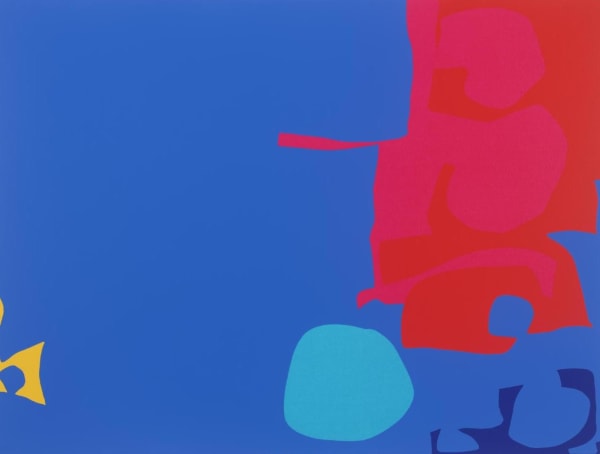William Scott U.K., 1913-1989
William Scott CBE RA (15 February 1913 – 28 December 1989) was a British artist known for still-life and abstract painting. He is the most internationally celebrated of 20th-century Ulster painters.
In 1928, Scott attended Belfast College of Art, and in 1931 he won a scholarship to the Royal Academy Schools in London. There he won a silver medal and became a Landseer scholar in painting. In London he shared rooms with three Swansea men, the painters Alfred Janes and Mervyn Levy and the poet Dylan Thomas. He was awarded a Leverhulme scholarship in 1935.
Scott married in 1937, and for the next two years lived abroad, mostly in Italy and in France, where he founded an art school in Pont-Aven, Brittany. However, in 1939 after the declaration of World War II he returned abruptly to Britain. For six months he was in Dublin, where his first son, Robert, was born. During the early years of World War II he helped to run an art school in Bath, Somerset. In 1941 he settled in Hallatrow, High Littleton, Somerset. In July his second son, James, was born in Wells. In 1942 he volunteered for the navy, but was accepted for the army, and after serving with a number of regiments he became attached to the Royal Engineers, with whom he served until 1946 and where he learned lithography in the map-making section.
From 1946 until 1956 Scott was senior lecturer in painting at the Bath Academy of Art. In the summer of 1953 he visited the USA where he met Jackson Pollock, Elaine de Kooning, Franz Kline and Mark Rothko. Although his work had become predominantly abstract in 1952, after his meeting with the American Abstract Expressionists., he reverted to his roots in still life and European painting.
Scott represented Britain in 1958 at the Venice Biennale. He exhibited extensively in London, New York, Italy, Switzerland, West Germany, France, the Kasahara Gallery in Japan, Canada and Australia, as well as Belfast and Dublin. Retrospectives of his work were held at the Tate Gallery, London in 1972, in Edinburgh, Dublin and Belfast in 1986, by the Irish Museum of Modern Art, Dublin in 1998 and the Jerwood Gallery in 2013. He died at his home near Bath, Somerset in 1989.
-

Post-War/Modern
Art at the OWO 8 October 2024 - 31 January 2025Dellasposa Gallery is delighted to present a new exhibition at The OWO Residences by Raffles in London. This historic venue, once the former War Office, now serves as a unique...Lees meer -

Modern Mavericks
5 - 21 September 2019Dellasposa Gallery is pleased to present Modern Mavericks. The exhibition explores the work of Pablo Picasso and Henri Matisse and the indelible mark they left upon British modernism through the artists Patrick Heron, Patrick Caulfield, and William Scott.Lees meer
Pablo Picasso and Henri Matisse stand at the heart of modernism as they cross the frontier between figurative art and abstraction in their unique quests for new aesthetic expression. The exhibition traces the ways the British artists engaged with a much deeper and more varied appreciation of the modern masters than is widely understood, by drawing a comparison with Picasso's metamorphosis of style and Matisse's use of colour and pure line.
Formed between dialogue of European pictorial tradition and culture of modernity, the British artists were inspired by the avant-garde while reinterpreting visual language to express their own progressive form of abstraction. Among the British artists for whom the work of Picasso and Matisse proved significant stimulus, Terry Frost, Patrick Heron, Patrick Caulfield, and William Scott - all associated with St Ives in Cornwall - emerged as a dynamic force.
Picasso was a maverick in every sense - his evolution of subject and style was never absorbed by one influence. While he pioneered many of the most significant movements in the twentieth, his aesthetic and profound sensibility was so unique and distinctive that it still remains triumphant today. Yet without Picasso - or the equally brilliant Matisse - the story of British modernism that follows would have been quite different.
Modern Mavericks presents a collection of original limited edition prints, works on paper, and paintings. The exhibition is curated with the view that works of art are influenced not only by more extensive cultural and philosophical developments but also by idiosyncratic qualities and disposition of the artist whose unique aesthetic eye informs what they create.



